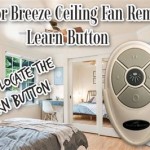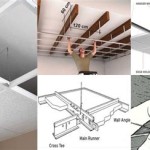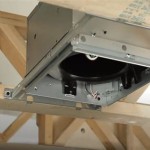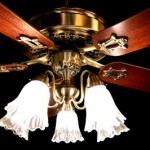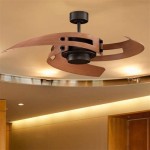A Comprehensive Guide To Cloud Ceiling Lights And Fans
Cloud ceiling lights and fans represent a convergence of aesthetics and functionality in modern interior design. These fixtures, often designed to mimic the appearance of clouds, offer diffused illumination and air circulation, contributing to a comfortable and visually appealing environment. Understanding the various types, features, installation considerations, and benefits associated with cloud ceiling lights and fans is crucial for making informed decisions regarding their integration into domestic, commercial, or institutional spaces.
The "cloud" element in these fixtures can manifest in diverse forms, ranging from softly shaped diffusers that conceal the light source to more elaborate designs incorporating textured materials and integrated LED lighting. Similarly, the fan component can range from traditional bladed designs to bladeless configurations, offering varying degrees of airflow and visual impact. This comprehensive guide explores the key aspects of cloud ceiling lights and fans to assist in selecting and implementing the optimal solution for specific needs.
Types of Cloud Ceiling Lights and Fans
The market offers a wide array of cloud ceiling lights and fans, each catering to different aesthetic preferences and functional requirements. These fixtures can be broadly categorized based on their design, lighting technology, fan type, and control mechanisms.
Design Variations: The design of the "cloud" element is a primary differentiator. Some models feature a smooth, opaque diffuser molded into a rounded or amorphous shape, effectively mimicking the appearance of a cloud. These typically employ an internal light source, which shines through the diffuser to create ambient illumination. Other variations incorporate textured materials, such as felt or fabric, to enhance the visual depth and realism of the cloud effect. Some high-end models may even feature layered designs, where multiple cloud-shaped elements are arranged to create a three-dimensional effect.
Lighting Technology: The majority of modern cloud ceiling lights utilize LED (Light Emitting Diode) technology. LEDs offer several advantages, including energy efficiency, long lifespan, and dimming capabilities. The color temperature of the LED light can also be adjusted, ranging from warm white (around 2700-3000K) to cool white (around 4000-5000K), allowing for customization of the ambiance. Some models feature RGB (Red, Green, Blue) LEDs, enabling a wide spectrum of colors to be displayed, offering further aesthetic customization. In some instances, older models using fluorescent bulbs may still be available but offer less energy efficiency compared to LED options.
Fan Types: The fan component of a cloud ceiling light and fan fixture significantly impacts its performance and aesthetics. Traditional bladed fans are the most common type, typically featuring three to five blades arranged around a central motor. The blade design, pitch, and number of blades all influence the airflow generated by the fan. Bladeless fans, also known as air multipliers, utilize a different mechanism to circulate air. These fans draw air into the base of the unit and then force it through a narrow aperture, creating a smooth and consistent airflow. Bladeless fans are often considered safer and easier to clean than traditional bladed fans.
Control Mechanisms: Control methods for cloud ceiling lights and fans vary considerably. Simple models may feature basic on/off switches for the light and fan, while more advanced models offer remote control functionality. Remote controls typically allow for adjusting the fan speed, dimming the light, and changing the color temperature or color of the light (in RGB models). Some smart cloud ceiling lights and fans can be controlled via smartphone apps or voice assistants, offering advanced features such as scheduling, scene setting, and integration with other smart home devices.
Key Features and Functionality
Beyond the basic design and technology, several key features and functionalities contribute to the overall performance and user experience of cloud ceiling lights and fans. These features should be carefully considered when selecting a fixture.
Airflow Capacity: The airflow capacity of the fan is a crucial factor, particularly in larger rooms. Airflow is typically measured in CFM (Cubic Feet per Minute). A higher CFM rating indicates a greater volume of air being circulated. The appropriate CFM rating for a room depends on its size and ceiling height. Online calculators and manufacturer guidelines can assist in determining the required CFM for a specific room. Factors such as room usage (e.g., bedroom, living room, kitchen) and climate should also be considered.
Noise Level: The noise level of the fan is an important consideration, particularly in bedrooms and other areas where quiet operation is desired. Fan noise is typically measured in decibels (dB). A lower dB rating indicates a quieter fan. High-quality fans often feature specially designed motors and blades that minimize noise. Some models also offer a "silent" or "sleep" mode, which reduces the fan speed and noise level while maintaining airflow.
Light Output and Color Temperature: The light output of the cloud ceiling light is measured in lumens. A higher lumen rating indicates a brighter light. The appropriate lumen rating depends on the size of the room and the intended use of the light. The color temperature, as mentioned earlier, affects the ambiance of the room. Warm white light is often preferred for creating a cozy and relaxing atmosphere, while cool white light is better suited for tasks that require focus and concentration.
Energy Efficiency: Energy efficiency is an increasingly important consideration. Look for models with high energy efficiency ratings, such as Energy Star certification. LED lighting is inherently more energy-efficient than traditional lighting technologies. Fans with DC (Direct Current) motors are typically more energy-efficient than those with AC (Alternating Current) motors. By choosing an energy-efficient model, energy consumption and electricity bills can be significantly reduced.
Smart Features: Smart cloud ceiling lights and fans offer a range of advanced features, such as remote control via smartphone apps, voice control compatibility, scheduling capabilities, and integration with other smart home devices. These features can enhance convenience and allow for greater control over the lighting and fan settings. For example, the light can be automatically turned on or off based on a schedule, or the fan speed can be adjusted based on the room temperature.
Installation and Maintenance Considerations
Proper installation and maintenance are essential for ensuring the safe and efficient operation of cloud ceiling lights and fans. It is recommended to consult a qualified electrician for installation, particularly if wiring modifications are required.
Installation Process: The installation process typically involves mounting the fixture to a junction box in the ceiling, wiring the light and fan components, and attaching the cloud-shaped diffuser or fan blades. It is essential to follow the manufacturer's instructions carefully and to ensure that all connections are secure. The weight of the fixture should be supported by the junction box and ceiling structure. If the existing junction box is not strong enough, it may need to be reinforced or replaced.
Safety Precautions: Before starting the installation, turn off the power to the circuit breaker that controls the lighting fixture. Use electrical tape to insulate any exposed wires. Wear appropriate safety glasses and gloves. If working at heights, use a sturdy ladder and ensure that it is properly positioned. If unfamiliar with electrical wiring, it is best to hire a qualified electrician.
Maintenance Requirements: Cloud ceiling lights and fans require regular maintenance to ensure optimal performance. This typically involves cleaning the diffuser or fan blades to remove dust and debris. Use a soft cloth or a damp cloth to wipe the surfaces. Avoid using abrasive cleaners, as they can damage the finish. Check the fan blades regularly to ensure that they are securely attached. If the blades are loose, tighten the screws. Periodically inspect the wiring connections to ensure that they are secure. Replace the batteries in the remote control as needed.
Troubleshooting: Common problems with cloud ceiling lights and fans include flickering lights, buzzing noises, and slow fan speeds. Flickering lights may be caused by a loose connection or a faulty bulb. Buzzing noises may be caused by a loose fan blade or a faulty motor. Slow fan speeds may be caused by dust buildup or a faulty capacitor. Consult the manufacturer's troubleshooting guide for specific solutions.
Ultimately, selecting and maintaining a cloud ceiling light and fan requires consideration of design preferences, functional needs, and practical aspects of installation and upkeep. By carefully evaluating these factors, consumers can effectively integrate these fixtures into their living or working spaces, enhancing both comfort and aesthetic appeal.

How To Make A Cloud Ceiling Under 200 Diy Rgb Lighting The Ultimate Gaming Setup Room Tour

Cloud Ceiling Custom Art Clouds Ledlight Creative Fyp Awsome Ne Tiktok

Diy Cloud Ceiling For Your Gaming Room

How To Make Led Cloud Wall Light That Changes Color Craftionary

Diy Tiktok Cloud Ceiling

How To Make A Cloud Ceiling Under 200 Diy Rgb Lighting The Ultimate Gaming Setup Room Tour

How To For A Ceiling Fan Reviews By Wirecutter

Outdoor Ceiling Fan Ideas For Pergolas And Porches

Aerodyne With Led Light 52 Inch Smart Ceiling Fan Hunter

Diy Cloud Led Ceiling For 100 How To
Related Posts


